It’s natural to associate the Pacific Northwest with rainy winters, beavers, and redwood trees. When you survey the landscapes of Oregon and Washington, you’ll find they are more than 50 percent forest. And some extremely diverse forestry at that, flourishing with flora and fauna. But one thing that’s definitely not native to the Pacific Northwest is bamboo. So what about growing bamboo here?
The Pacific Northwest, including coastal Oregon and Washington, is an ideal region for growing bamboo. Abundant rainfall and mild winters provide a climate that’s conducive to a wide array of bamboo species. Many varieties of running bamboo and timber bamboo can thrive in this area, and a handful of subtropical species will tolerate these conditions as well.
NOTE: This article first appeared in April 2022, most recently updated in April 2024.
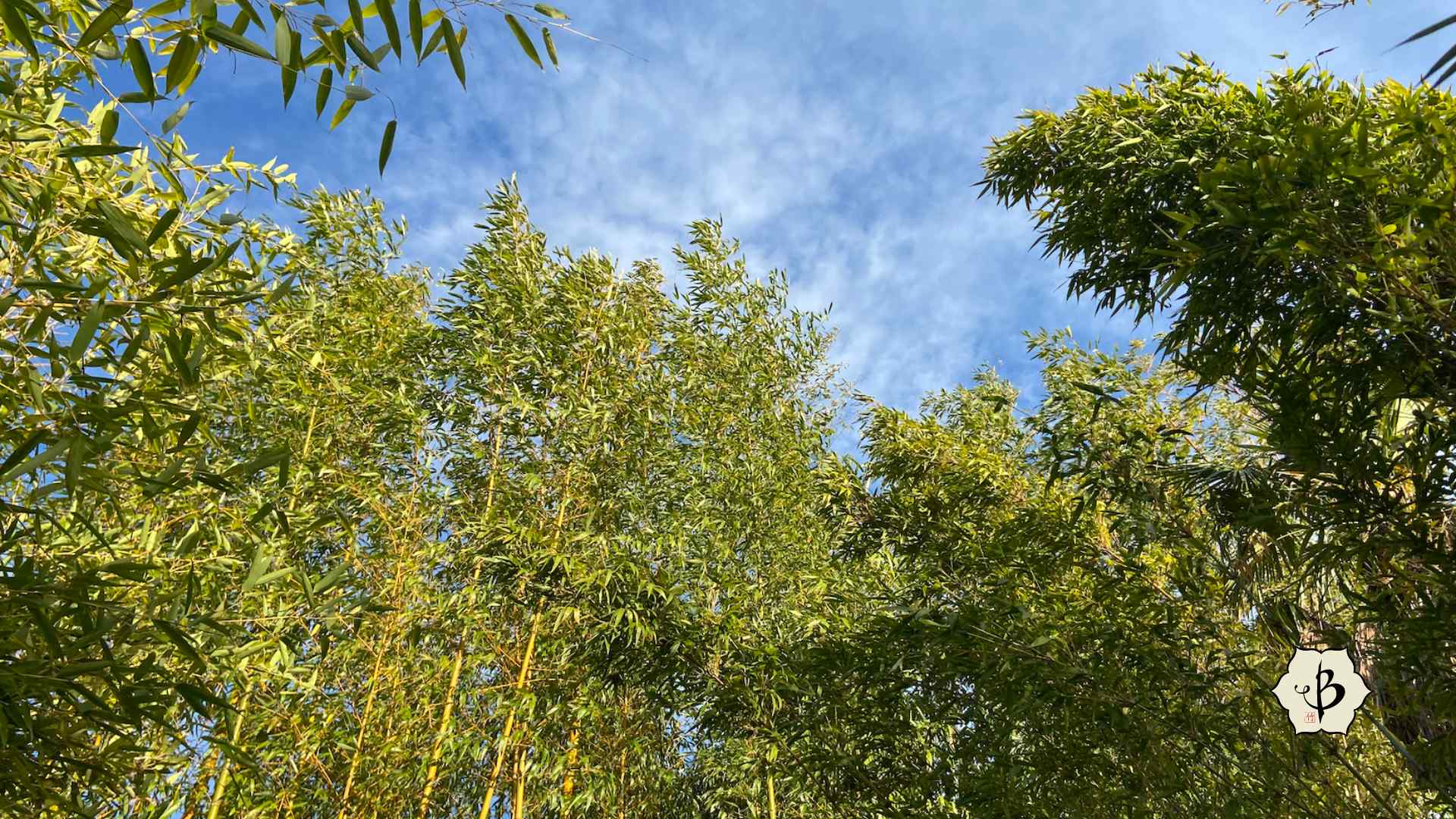
Bamboo in Oregon and Washington
Like most of the United States, there are no native species of bamboo in the Pacific Northwest. North America (not including Mexico) only has three native bamboos, of the genus Arundinaria, are they are all endemic to the Deep South.
Oregon and Washington are a long way from the tropics of Indonesia, but in fact, the climatic conditions, especially near the coast, are perfect for a great variety of bamboo species. The tropical breeds of Southeast Asia might not perform well here, but nearly any species of temperate bamboo and even some subtropical varieties can thrive here.
Heavy rainfall allows the forests of the Pacific Northwest to flourish, and bamboo will do so as well. Winters are also mild, making the region suitable for a wide range of flora that might not survive in other areas that far north.
Most local nurseries will offer a few varieties of bamboo. And you can find several bamboo specialty nurseries between Oregon and Washington, too.
Well-watered bamboo
An ample water supply means that running bamboo can proliferate very easily. That means it’s more important than ever to keep your runners well-contained. Indeed, the conditions for bamboo are so favorable here, it can be scary.
In drier climates, bamboo tends to confine itself to the irrigated patches of the garden. Or if there’s a neighbor with a regular sprinkler system, that could be an issue. But when precipitation is abundant, a running bamboo can spread just about anywhere it pleases.
Our favorite method for containing bamboo is to dig a trench around the desired boundaries. When the rhizome roots reach the trench, it’s a piece of cake to cut them back.
Another option is to plant clumping bamboo. Clumpers have a different type of rhizome, so the new growth stays relatively close and clustered together. In general, clumpers prefer warmer weather while runners are more cold-hardy. But there are plenty of exceptions, and the temperatures seldom dip too far below freezing, at least not near the coast.
Excellent bamboo species for the Pacific Northwest
Of the 1,500 or so species of bamboo, there are more than enough to choose from. And it would be unreasonable to present a complete list of species suitable for the Pacific Northwest. You can always visit our list of the 10 Best bamboo species for your garden. The following short list includes some varieties that are likely to do better in the cool climates of Oregon and Washington than elsewhere in the country.
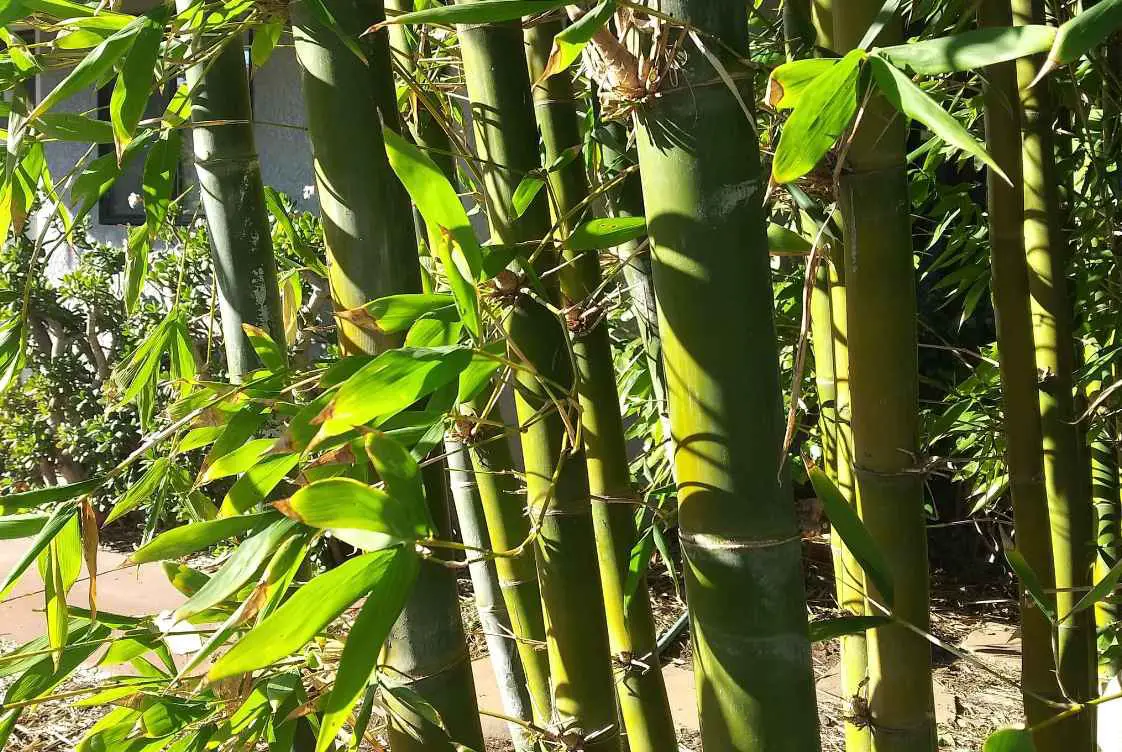
Bambusa oldhamii
Oldhamii is always a popular choice of bamboo, and its versatility makes it a good choice for any mild climate. Bambusa is a subtropical genus with a clumping growth habit. So it’s hardy down to about 20-25º F and it won’t spread out of control. Furthermore, it’s a timber bamboo, with tall, elegant culms that can easily reach 40 or 50 feet high. This towering species makes a fabulous centerpiece. Its footprint is roughly 10 feet by 10 feet. If the clump is getting too big, you also can cut back the fresh young shoots, which also happen to be edible.
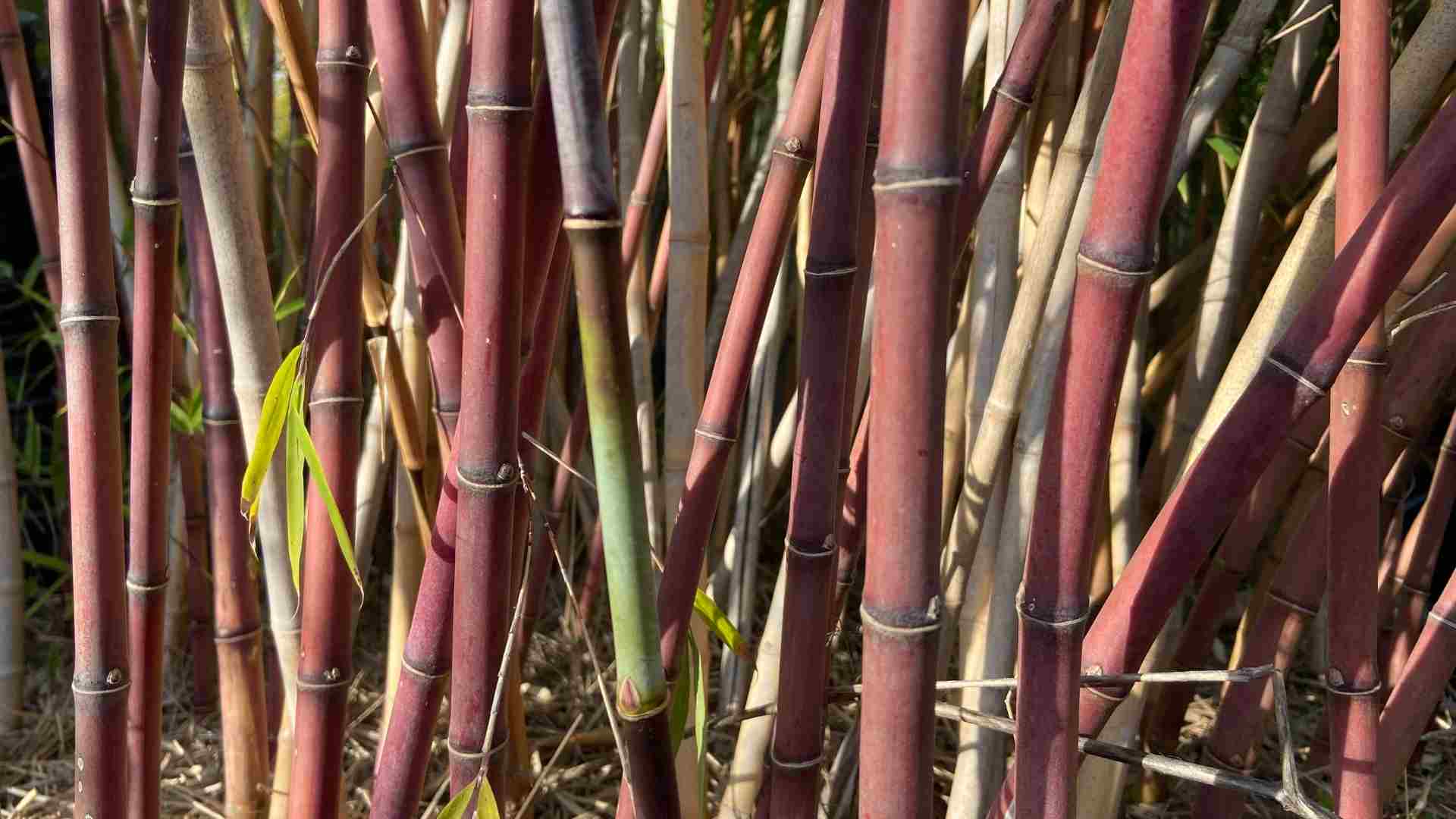
Borinda fungosa, Chocolate bamboo
A far less common variety of bamboo, but exceptionally attractive, Chocolate Bamboo will make your mouth water. Although the name suggests something dark brown, this rare beauty is actually more of a deep magenta. Borinda is a genus of montane bamboo that is both clumping and cold hardy. Slender culms grow 10 to 20 feet high, and the plant prefers at least partial shade. It does not do well it hot climates like the Southeast.
Chimonobambusa quadrangularis, Square bamboo
Another exotic species, Square Bamboo takes its name from its unusually angular culms. A medium-sized running bamboo, these plants can grow up to between 10 and 25 feet tall, depending on the conditions, with 1-1.5 inch thick canes. The leaves grow in a terraced pattern, producing a sense of steps or a cascading effect, which can be very attractive. It’s a good idea to keep this bamboo well-pruned to show off the interesting culms on the bottom half of the plant.
Square Bamboo also prefers cooler climates, with highs in the 70s, and at least some partial afternoon shade. It also needs regular watering. It’s cold-hardy to about 10-15º F. Also check out its close cousin, Walking Stick Bamboo, which has similar growing requirements.
Hibanobambusa tranquillans ‘Shiroshima’
Shiroshima Bamboo is said to be one of the first life forms to recover after the atomic bombing of Hiroshima in 1945. Whether that’s truth or legend, this rare species can thrive in a wide variety of conditions, from hot to freezing, sun or shade, even indoors. This is a compact bamboo that only grows about 10 feet tall, with very slender, delicate culms. But it’s a runner, so be sure to contain it. The most interesting quality is probably the lovely variegation of the leaves, which keep their vibrant color all year round.
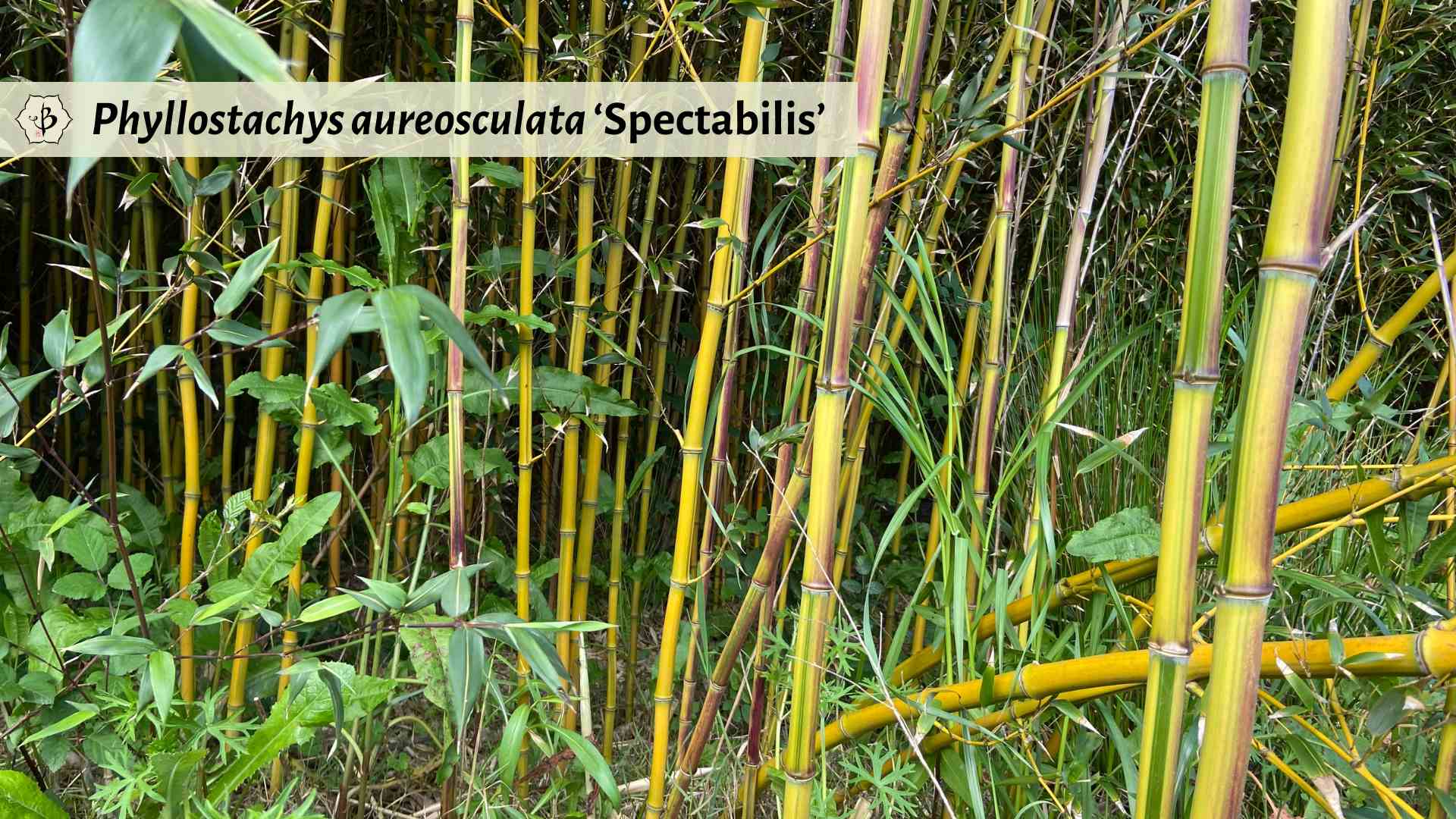
Phyllostachys aureosulcata ‘Spectabilis’
A beautiful specimen for most climates, ”Spectabilis’ grows quickly with beautiful golden canes and exquisite stripes. Culms only get about 1.5 to 2 inches in diameter, but will grow 30 to 40 feet high. As a dense growing bamboo, it can also provide an excellent privacy screen. Cold-hardy down to about 0-10º F.
Phyllostachys bambusoides, Japanese timber bamboo
Also known as Madake or Japanese Timber Bamboo, many bamboo enthusiasts consider Phyllostachys bambusoides the best and most attractive species of timber bamboo for the Pacific Northwest. It’s comparable in size to Vivax or Moso, with majestic culms of deep green and thick, resplendent foliage. This too is a runner, so be sure to dig a trench or use a barrier. But if you have the space to let it spread, you can create a magical bamboo woodland.
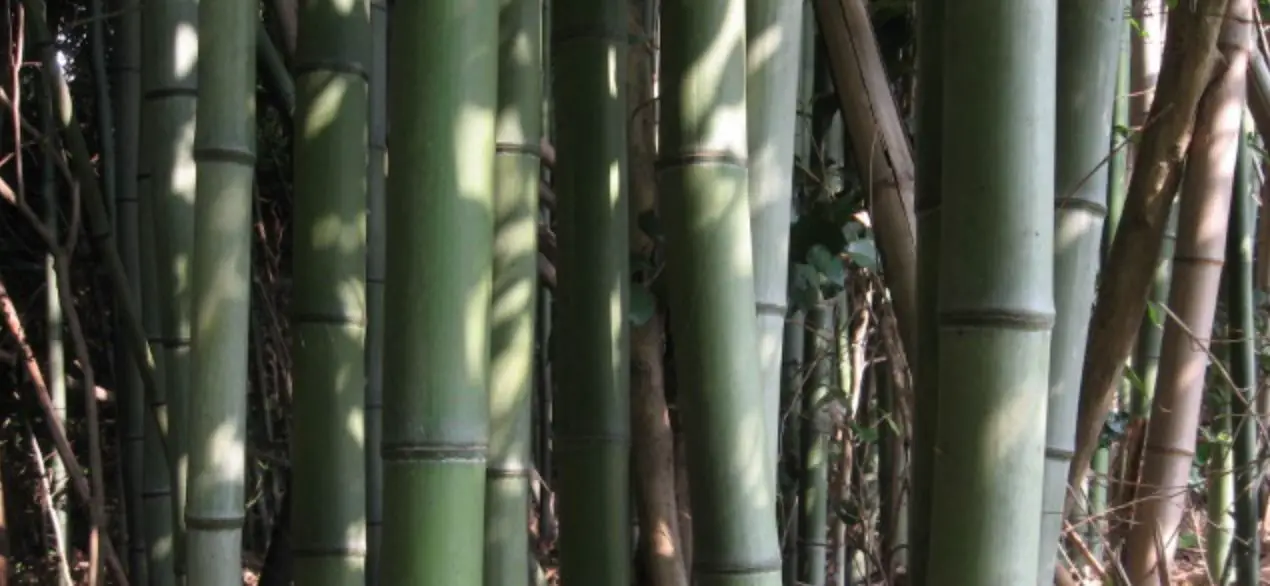
Phyllostachys vivax
Another species of timber bamboo, Vivax is also very versatile. It looks a lot like Moso bamboo, but unlike this close relative, Vivax grows easily on the West Coast. In ideal conditions, it can grow over 50 feet tall with culms 4 or 5 inches in diameter. As a runner, this bamboo will spread and form a forest in a way that clumpers will not. Like most Phyllostachys, it’s cold hardy to around 10º F.
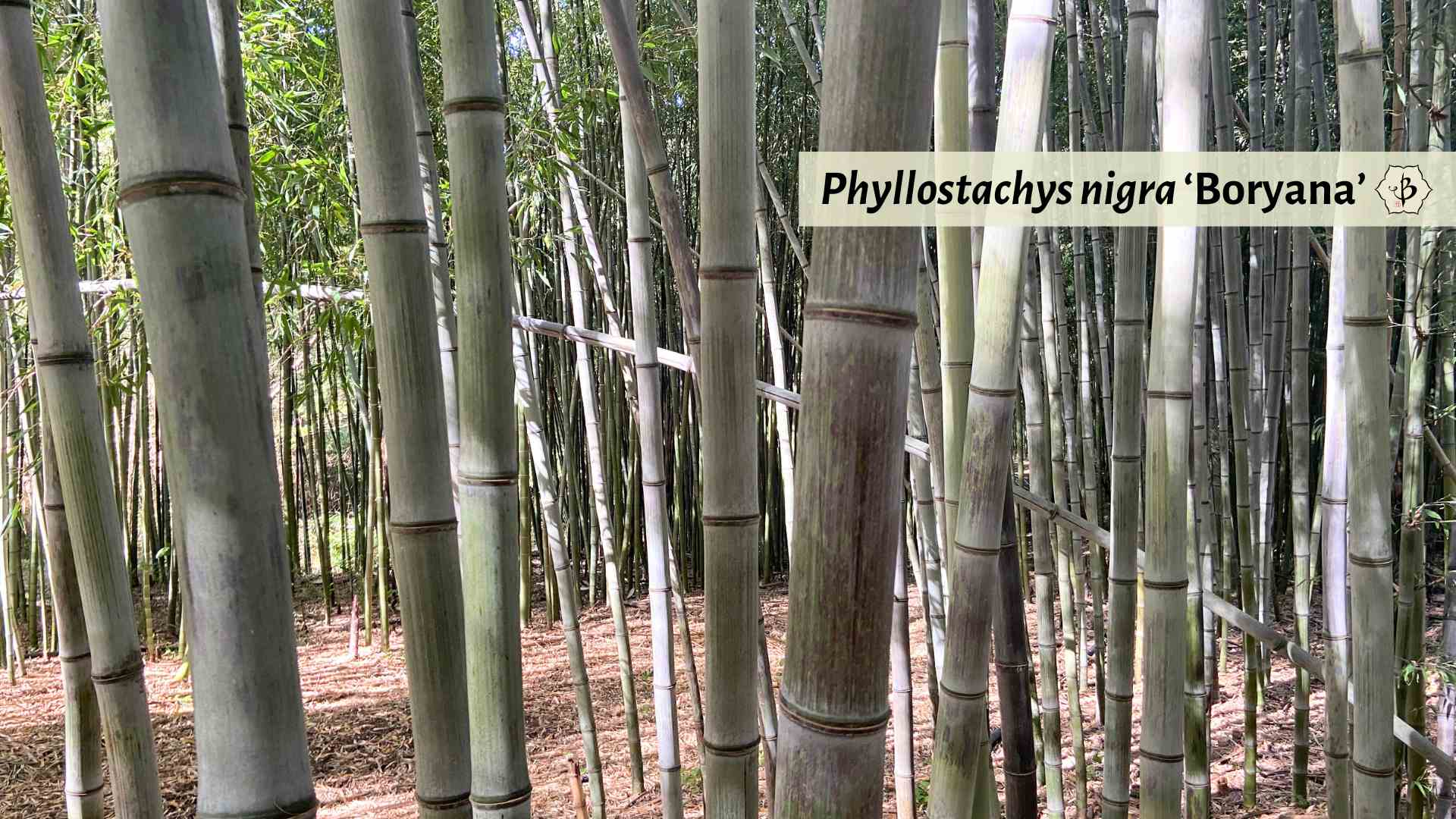
Further reading
If you’re curious about the plethora of bamboo species and which ones to grow under which conditions, then you’ve come to the right place. Take a look at some of these articles to learn more.


























Looking for the right type of Bamboo for coverage in Newport OR
Phyllostachys aureosulcata ‘Spectabilis’ will work fine in Newport Oregon.
Looking for a variety of bamboo that will grow to 20′ in Marysville, WA. Would you also specify if the variety is running or clumping rhizome.
Thank you,
Gale
Hi Gale, My Best suggestions would be something ornamental from the genus Bambusa, such as textilis or multiplex. Not sure if chungii would handle the winters there. Or something more cold tolerant from the genus Himalayacalmus.
What advise would you have for species East of the Cascades in the drier/sunnier part of PNW? I’m considering a quick grow for privacy and Spectabilis seems to be more cold hardy. However, I’m near the Columbia River gorge and it can be quite windy year-round and winters can be below freezing.
Spectabilis is a beautiful choice. All the members of the genus Phyllostachys are very cold-hardy and freezing temperatures shouldn’t be a problem. The wind could be a challenge in the first years, but once it’s established, it will provide a nice windbreak. Try planting a few species of Phyllostaychs side-by-side. They will provide wind protection for each other, and you can see which once thrives the best in your local conditions.